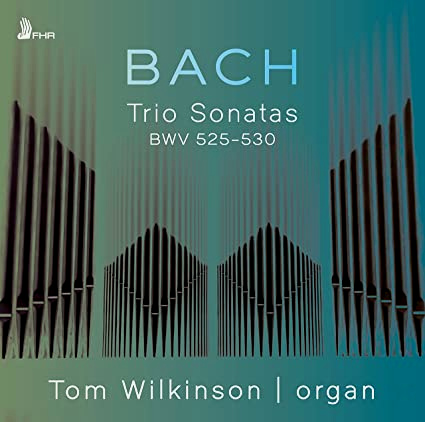
ESSENTIAL RECORDINGS

You don't need to go much farther within Bach's vast opus to behold this composer's genius. Even more impressive when you take into consideration the fact that Johann Sebastian Bach (1685-1750) actually composed these Trio Sonatas, BWV 525-530 as organ study works for his eldest son Wilhelm Friedemann, who at the age of 15, had to master the organ so as to be able to partake in the weekly Sunday Cantata performances, by playing the obbligato organ part. Wilhelm Friedemann eventually became a great organist, understandably so if these intricate Trio Sonatas formed the bulk of his studies.
Although they may sound simple compared to his impressive Toccatas and Fugues, they are actually more difficult in that the three individual parts (they are based on Italian chamber sonatas for 3 instruments), the two keyboards and pedals are constantly involved in the musical discourse. Most of Bach's large Preludes and Toccatas are in 2 parts, with the pedals acting only as harmonic foundation and support. On the other hand, in the Trio Sonatas, at any given moment, the pedals become the leading voice while the hands move on to something else. The counterpoint is always shifting from part to part, and you need to be a master organist in order to achieve that perfect balance at all times, not only musically, but also through the use of the organ's registration.
Organist Tom Wilkinson, who is the Performance Course Organiser and Tutor as well as organist at the University of St Andrews, Scotland, does an excellent job distinguishing and delineating the three distinct contrapuntal voices at all times. Organists are a prime example of how the human brain is built for multitasking. Especially within these pieces where the right hand, left hand and both feet are playing their individual parts, all the while reading the music, turning the pages, and altering the organ's registration, all simultaneously. The instrument used for this recording is the 1978, 21 stop, tracker action, two manual German organ built by Jürgen Ahrend, in the Reid Concert Hall of the University of Edinburgh. Small in stature but perfectly suited for these intricate works, as it is based on early 18th century German models, integral to the performance of baroque organ music.
The recorded sound is crisp and clean, practically sitting you at the keyboard. You can clearly hear the chaff of the pipes, and precise articulation of each and every note. This recording definitely belongs in each and every organ music enthusiast's collection.
Jean-Yves Duperron - October 2022